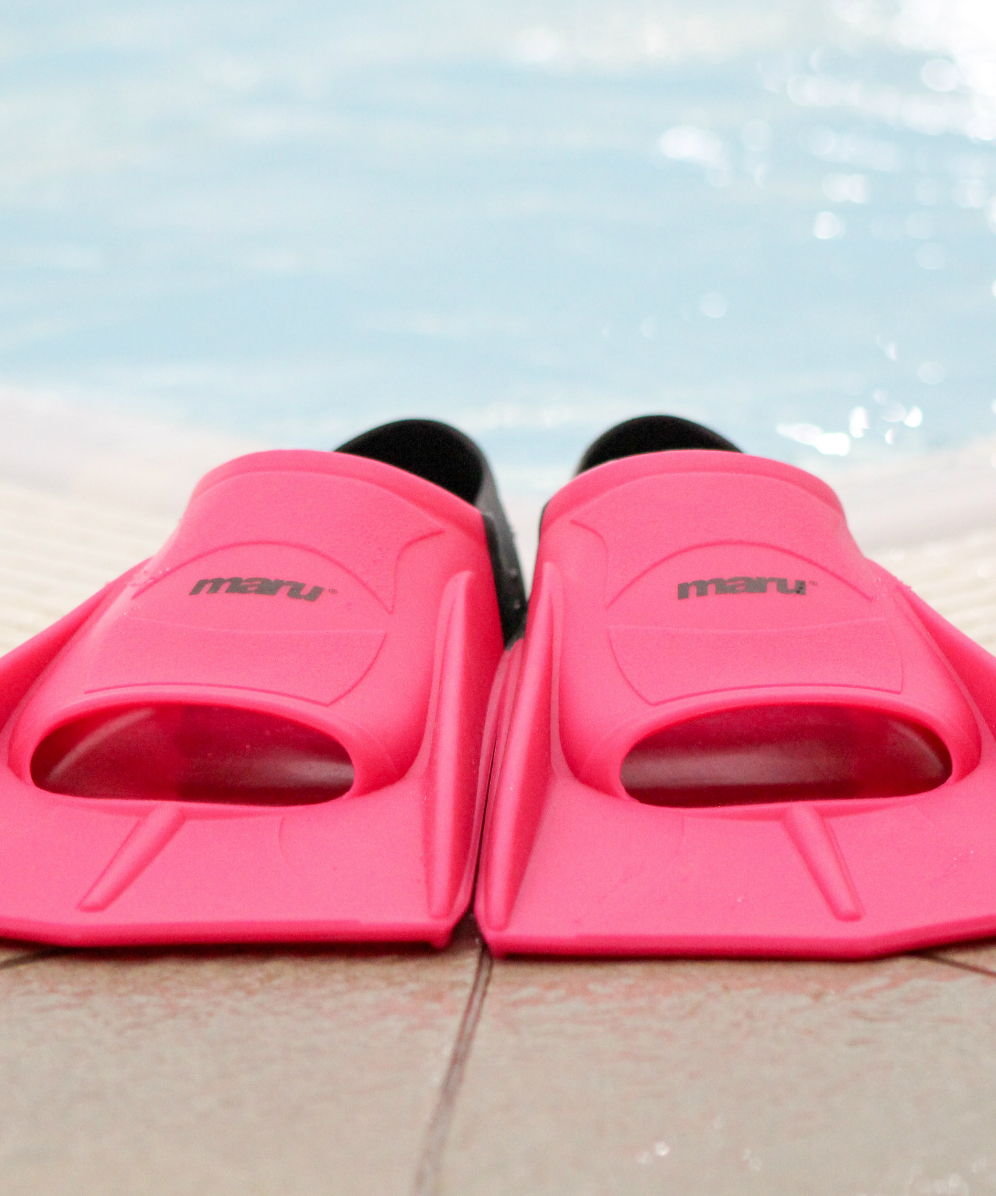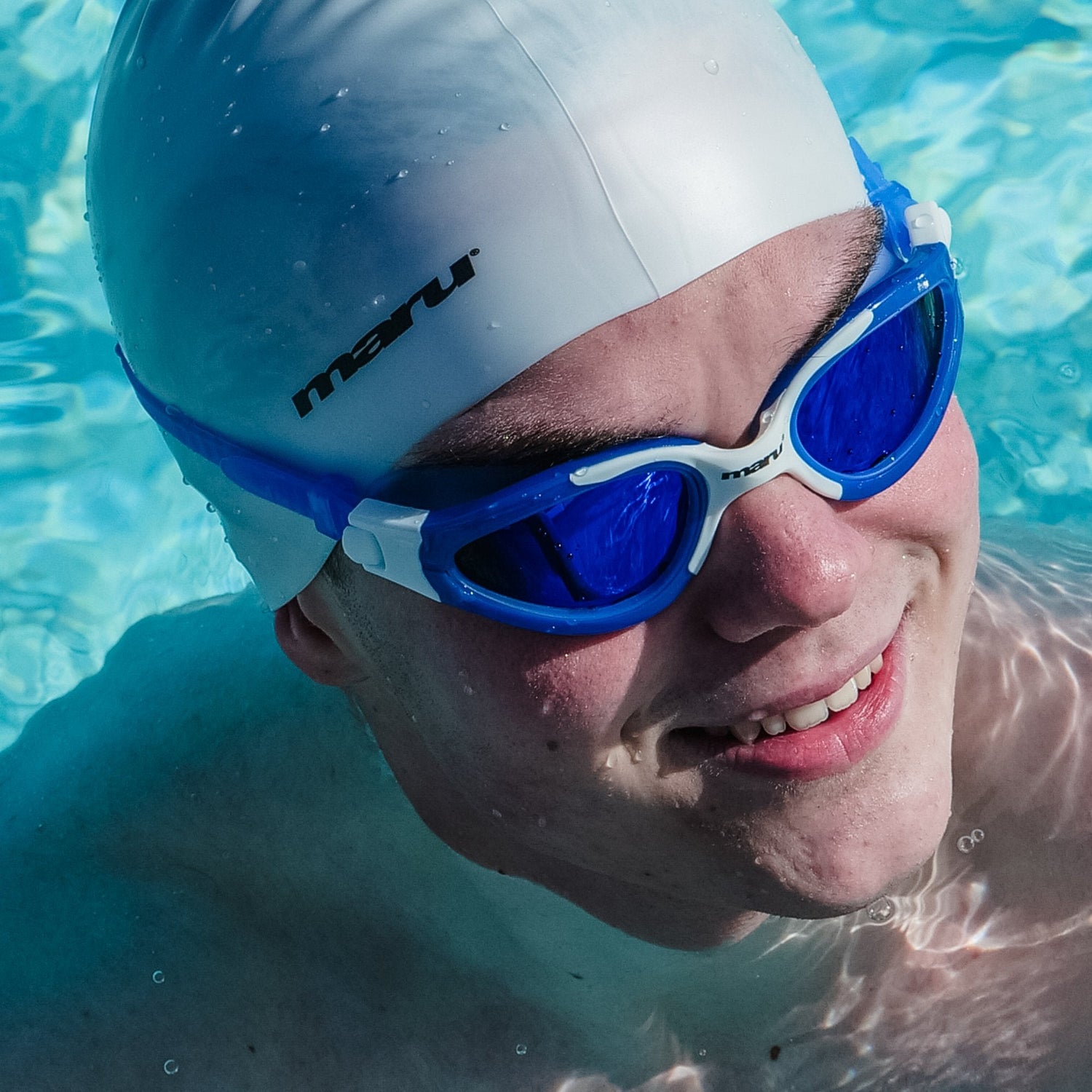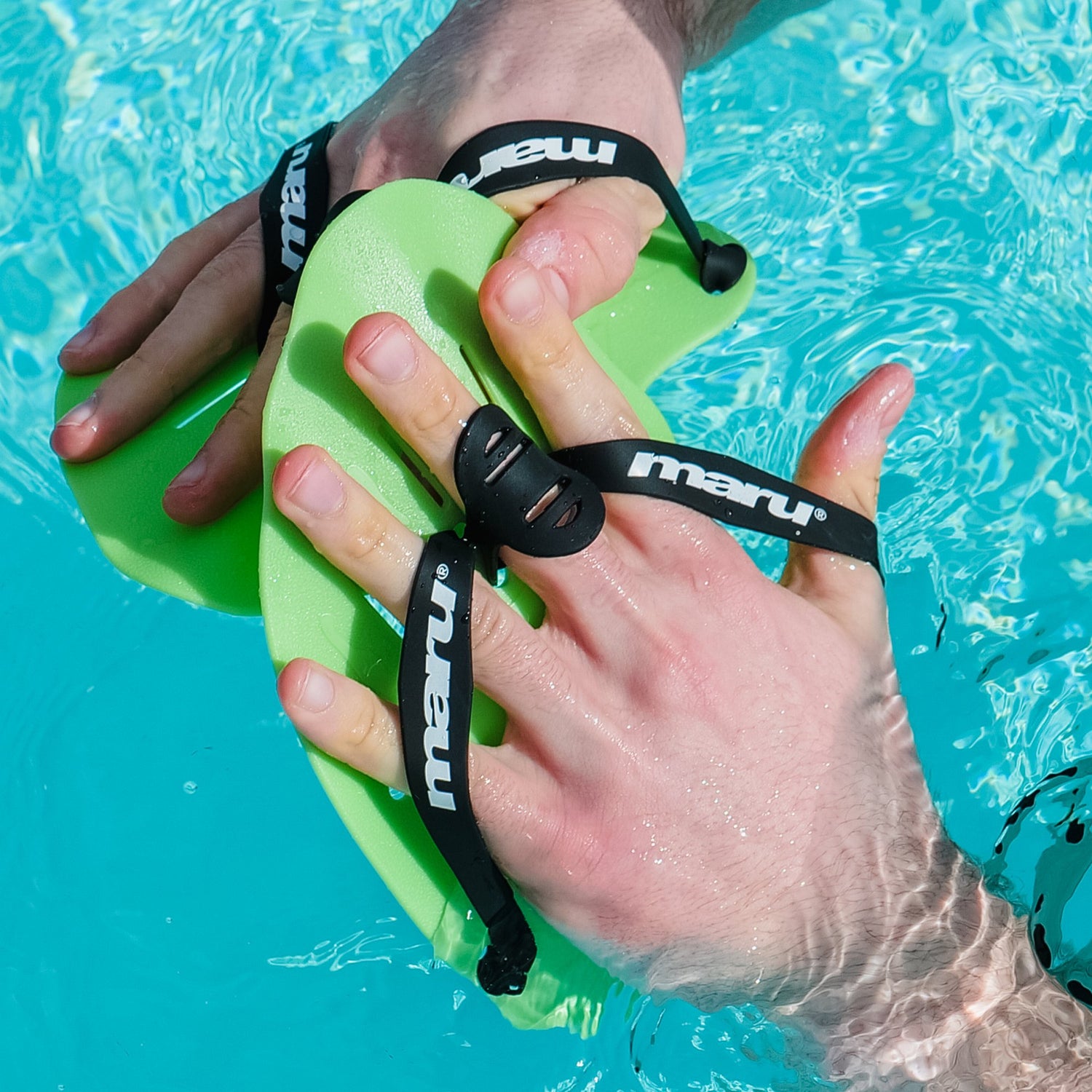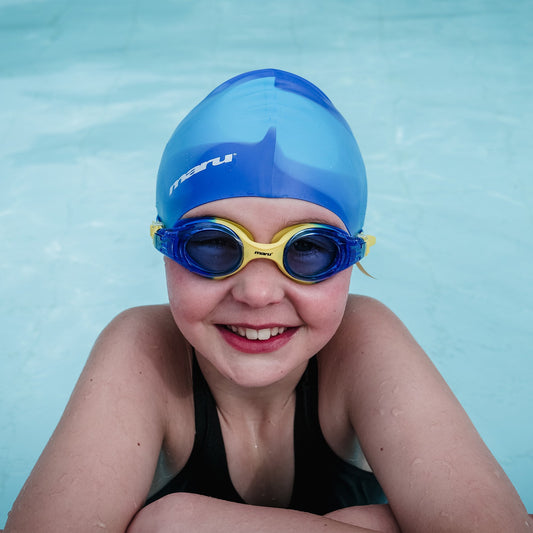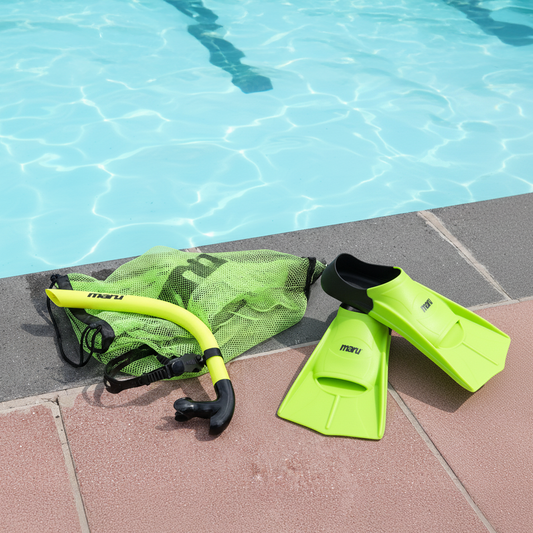Als Schwimmtrainer mit Erfahrung in der Arbeit mit Hunderten junger Schwimmer in ganz Großbritannien kann ich mit Überzeugung sagen, dass Handpaddel zu den wirkungsvollsten Trainingshilfen gehören. Sie mögen zwar simpel erscheinen – im Grunde flache Oberflächen, die an den Händen befestigt werden –, doch diese Trainingshilfen können bei korrekter Anwendung die Technik deutlich verbessern, Kraft aufbauen und die Schwimmentwicklung beschleunigen.
Handpaddel: Den Zweck verstehen
Handpaddel vergrößern die Oberfläche der Hände und erzeugen so mehr Widerstand im Wasser. Dieser Widerstand zwingt Schwimmer, ihre größeren Muskelgruppen effektiver einzusetzen und entwickelt einen stärkeren, effizienteren Zug. Für junge Schwimmer bedeutet dies ein besseres Technikgefühl und deutliche Kraftzuwächse, die sich positiv auf ihr reguläres Schwimmtraining auswirken.
Der erhöhte Widerstand verstärkt zudem die sensorische Rückmeldung und hilft Schwimmern, das Wasser besser zu spüren. Dieses verbesserte Wassergefühl ist entscheidend für die Entwicklung der feinen Hand- und Unterarmbewegungen, die gute von hervorragenden Schwimmern unterscheiden.
Hilfe bei der Entwicklung und Technik des Paddelschlags mit Handpaddeln
Handpaddel eignen sich hervorragend, um die korrekte Zugtechnik zu vermitteln. Junge Schwimmer bemerken beim Einsatz von Paddeln sofort, wenn ihr Handeinsatz unsauber ist oder sie das Wasser nach hinten drücken, anstatt es effektiv zu greifen. Die Paddel verstärken technische Fehler und machen sie unübersehbar.
Freistil : Paddel helfen Schwimmern, die für effizientes Freistilschwimmen essentielle hohe Ellbogenposition beim Wasserfassen zu entwickeln. Die vergrößerte Oberfläche erleichtert das Spüren, wenn Hand und Unterarm als Einheit zusammenarbeiten, um das Wasser zu greifen.
Rückenschwimmen : Der Widerstand der Paddel hilft Rückenschwimmern, das richtige S-förmige Zugmuster zu entwickeln und gleichzeitig die für ein kraftvolles Rückenschwimmen notwendige Schulter- und Latissimusmuskulatur aufzubauen.
Schmetterling : Obwohl es eine Herausforderung darstellt, können Paddel Schmetterlingsschwimmern helfen, das gleichzeitige Zugmuster zu entwickeln und die für diesen Schwimmstil erforderliche Oberkörperkraft aufzubauen.
Aufbau schwimmspezifischer Kraft
Der Trainingseffekt von Paddeln mit Handpaddeln ist nicht zu unterschätzen. Regelmäßiges Paddeltraining stärkt die beim Schwimmen beanspruchten Muskelgruppen – Latissimus, Schultern, Unterarme und Rumpfmuskulatur – und zwar genau in den Bewegungsmustern, die für effizientes Schwimmen erforderlich sind.
Dieses Krafttraining ist besonders wertvoll für junge Schwimmer, die möglicherweise noch keinen Zugang zu traditionellem Trockentraining haben oder dafür noch nicht bereit sind. Paddel bieten eine sichere, schwimmspezifische Möglichkeit, die für Wettkampfschwimmen notwendige Kraft aufzubauen, ohne die Umgebung des Schwimmbeckens verlassen zu müssen.
Das Prinzip der progressiven Überlastung lässt sich perfekt auf das Paddeltraining anwenden. Mit zunehmender Kraft und technischer Versiertheit können Schwimmer größere Paddel verwenden oder anspruchsvollere Trainingsprogramme einbauen.
Entwicklung des Wassergefühls und des richtigen Timings
Einer der größten Vorteile des Paddeltrainings ist die Entwicklung des Wassergefühls – die Fähigkeit, zu spüren, wie sich Hände und Arme im Wasser bewegen. Die vergrößerte Oberfläche und der erhöhte Widerstand helfen Schwimmern, den Unterschied zwischen effektiven und ineffektiven Bewegungen zu verstehen.
Junge Schwimmer haben oft Schwierigkeiten mit Timing und Rhythmus, insbesondere bei Schwimmarten wie Schmetterling und Brustschwimmen. Handpaddel helfen dabei, das richtige Timing zu finden, indem sie das Gefühl dafür erleichtern, wann der Zug am effektivsten ist und wann die Hände das Wasser verlassen sollten.
Verletzungsprävention durch richtige Technik
Bei sachgemäßer Anwendung können Handpaddel tatsächlich dazu beitragen, häufige Schwimmverletzungen zu vermeiden. Indem sie Schwimmer dazu zwingen, ihre größeren Muskelgruppen einzusetzen und die korrekte Technik beizubehalten, verringern Paddel das Risiko von Schulterimpingement und anderen Überlastungsverletzungen, die im Leistungsschwimmen häufig vorkommen.
Entscheidend sind die richtige Steigerung und die richtige Anleitung. Junge Schwimmer sollten mit kleineren Paddeln beginnen und sich allmählich an größere herantasten, sobald sich ihre Technik und Kraft verbessern. Diese schrittweise Steigerung stellt sicher, dass gute Gewohnheiten etabliert werden, bevor der Widerstand erhöht wird.
Selbstvertrauensbildung im Training
Die Kraft und Geschwindigkeit, die Handpaddel ermöglichen, haben etwas besonders Befriedigendes. Junge Schwimmer erleben oft einen sofortigen Selbstvertrauensschub, wenn sie spüren, wie sie sich kraftvoller durchs Wasser bewegen. Dieses positive Feedback kann ungemein motivierend sein und die Begeisterung fürs Training aufrechterhalten.
Die Geschwindigkeitssteigerung durch korrekte Paddeltechnik hilft Schwimmern auch, ein Gefühl für effiziente Technik zu entwickeln. Sie beginnen, gute Technik mit höherer Geschwindigkeit zu verknüpfen, wodurch ein positiver Kreislauf entsteht, der zu ständiger Verbesserung anregt.
Die richtigen Handpaddel auswählen
Die Wahl geeigneter Handpaddel ist entscheidend, um den Nutzen zu maximieren und gleichzeitig das Verletzungsrisiko zu minimieren. Für junge Schwimmer sind kleinere Paddel in der Regel besser. Das Paddel sollte in alle Richtungen etwas über die Hand hinausragen, aber nicht so groß sein, dass es die Technik beeinträchtigt.
Achten Sie auf Paddel mit Riemen, die einen sicheren und gleichzeitig bequemen Sitz gewährleisten. Das Material sollte robust genug für den regelmäßigen Gebrauch und gleichzeitig glatt genug sein, um Reibung zu vermeiden. Hochwertige Paddel, wie beispielsweise von Maru, behalten ihre Form und Effektivität über lange Zeit und sind somit eine lohnende Investition.
Maru-Paddel verfügen über Löcher oder Belüftungsöffnungen, die den Wasserwiderstand leicht verringern und gleichzeitig die Schwimmtechnik verbessern. Sie eignen sich hervorragend für jüngere Schwimmer oder Anfänger im Paddeltraining.
Ausbildungsanwendungen und -verläufe
Handpaddel lassen sich in nahezu jedes Trainingsprogramm integrieren, von Aufwärmübungen bis hin zu hochintensiven Intervallen. Jungen Schwimmern empfehle ich, mit kurzen Strecken zu beginnen und sich auf die korrekte Technik zu konzentrieren, anstatt so schnell wie möglich zu schwimmen.
Gängige Übungsreihen beinhalten das abwechselnde Schwimmen von Bahnen mit und ohne Paddel, wodurch Schwimmer den Unterschied im Widerstand und in der Technik spüren. Dieses Kontrasttraining ist besonders effektiv, um das Bewusstsein für die korrekte Schwimmtechnik zu entwickeln.
Sicherheitsüberlegungen
Obwohl Handpaddel viele Vorteile bieten, müssen sie verantwortungsvoll eingesetzt werden. Junge Schwimmer sollten Paddel niemals über längere Zeiträume ohne Pausen benutzen, da der erhöhte Widerstand zu Ermüdung und Technikfehlern führen kann. Angemessene Aufsicht und schrittweise Steigerung sind unerlässlich.
Schwimmern sollte außerdem beigebracht werden, die Paddel sofort abzunehmen, wenn sie Schulterbeschwerden verspüren. Kraft- und Technikaufbau brauchen Zeit, und ein überstürzter Prozess kann zu Verletzungen führen.
Die langfristige Investition
Hochwertige Handpaddel sind eine hervorragende Investition in die Entwicklung Ihres jungen Schwimmers. Die technischen Verbesserungen, der Kraftzuwachs und das gestärkte Selbstvertrauen, die sich aus einem richtigen Paddeltraining ergeben, werden ihm während seiner gesamten Schwimmkarriere zugutekommen.
Das verbesserte Wassergefühl und die optimierte Schwimmtechnik, die durch Paddeltraining entwickelt werden, sind dauerhafte Verbesserungen, die sich auf alle Schwimmaktivitäten auswirken. Ob Ihr Kind Wettkampf- oder Freizeitschwimmen betreibt, die Vorteile eines richtigen Paddeltrainings kommen ihm zugute.
Handpaddel sind mehr als nur Trainingsgeräte – sie sind Werkzeuge zur persönlichen Weiterentwicklung. Bei korrekter Anwendung unter fachkundiger Anleitung können sie die Technikentwicklung beschleunigen, schwimmspezifische Kraft aufbauen und positive Trainingserfahrungen schaffen, die junge Schwimmer motivieren und begeistern.
Jeder effiziente Schwimmzug beginnt mit der richtigen Handhaltung und dem richtigen Wassergefühl. Geben Sie Ihrem jungen Schwimmer die nötigen Hilfsmittel, um diese wichtigen Fähigkeiten zu entwickeln – mit hochwertigen Schwimmhilfen, die ihn auf seinem Weg vom Anfänger zum fortgeschrittenen Schwimmer unterstützen.


